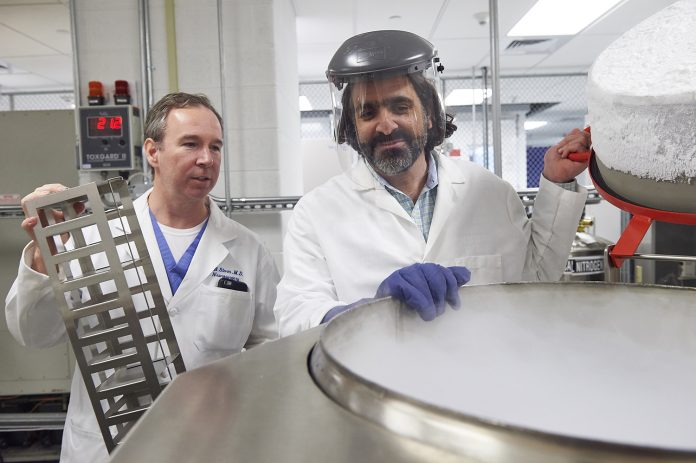
Since Hyder F. Brewster, M.D., and Herbert E. Cannon, M.D., first reported the occurrence of acute lymphoblastic leukemia (ALL) in an 11-month-old with Down syndrome in 1930, numerous studies have confirmed that children with structural birth defects are at much higher risk of developing certain childhood cancers—including increased leukemia risk in individuals with Down. Yet researchers still lack key clues as to how and why that occurs.
Helping to fill those knowledge gaps on the relationship between childhood cancer and birth defects will be among goals of the Kids First Data Resource Center (DRC), a centralized, cloud-based discovery portal and database bringing together clinical, genetic/phenotypic, and animal modeling data. The DRC is being funded with up to $14.8 million over five years, contingent on available funds, from the NIH Common Fund’s Gabriella Miller Kids First Pediatric Research Program.
The DRC is designed to combine data from dozens of distinct, previously established cohorts focused on birth defects and childhood cancers, and make them available to the global research community. Researchers hope to identify shared genetic pathways that can help better understand the links between childhood cancer and birth defects— knowledge that can be applied toward new treatments to stop or slow down cancers in children with birth defects.
“These are diseases of developmental biology. Kids don’t get cancer because they smoke, or because they’re out in the sun too long,” said Adam Resnick, Ph.D., director of the Center for Data Driven Discovery in Biomedicine (D3b) at Children’s Hospital of Philadelphia (CHOP). “The recognition of the developmental biology context is an opportunity for shared discovery across rare diseases that to date have not really fully harnessed the technology and opportunity to do such.
“To date, there has not been a data– driven initiative or infrastructure to support such cross–discovery efforts, and that’s a missed opportunity for accelerated discovery in the context of the modern age of large-scale omics platforms,” Resnick added.
Click here to access the rest of this article.













